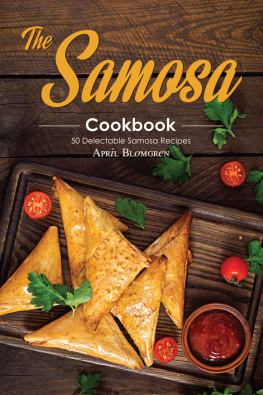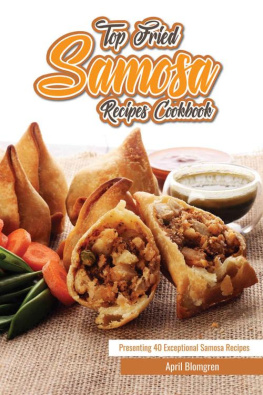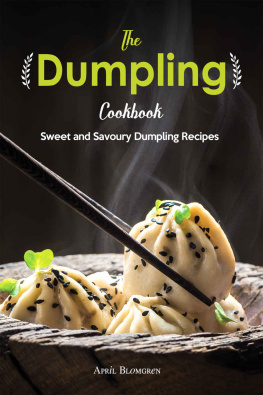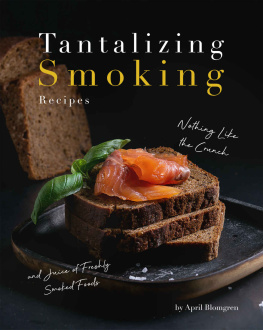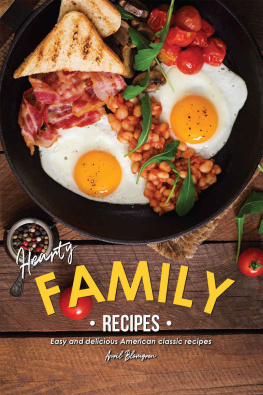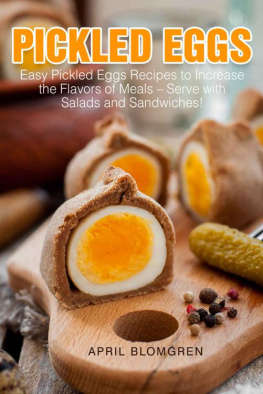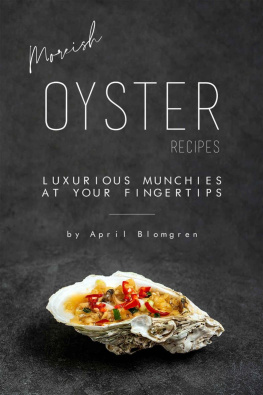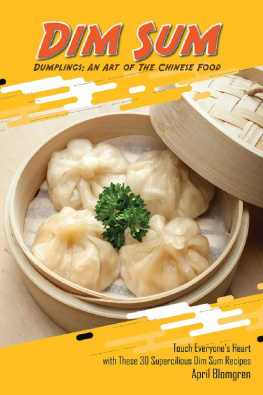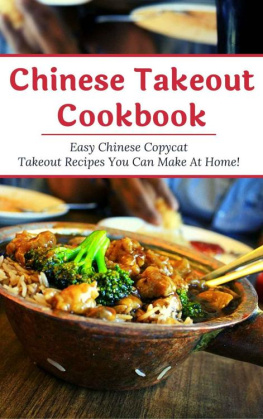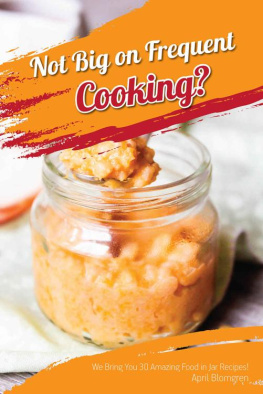April Blomgren - Chinese Cookbook: 58 Recipes You Can Make at Home!
Here you can read online April Blomgren - Chinese Cookbook: 58 Recipes You Can Make at Home! full text of the book (entire story) in english for free. Download pdf and epub, get meaning, cover and reviews about this ebook. year: 2020, genre: Home and family. Description of the work, (preface) as well as reviews are available. Best literature library LitArk.com created for fans of good reading and offers a wide selection of genres:
Romance novel
Science fiction
Adventure
Detective
Science
History
Home and family
Prose
Art
Politics
Computer
Non-fiction
Religion
Business
Children
Humor
Choose a favorite category and find really read worthwhile books. Enjoy immersion in the world of imagination, feel the emotions of the characters or learn something new for yourself, make an fascinating discovery.

- Book:Chinese Cookbook: 58 Recipes You Can Make at Home!
- Author:
- Genre:
- Year:2020
- Rating:4 / 5
- Favourites:Add to favourites
- Your mark:
- 80
- 1
- 2
- 3
- 4
- 5
Chinese Cookbook: 58 Recipes You Can Make at Home!: summary, description and annotation
We offer to read an annotation, description, summary or preface (depends on what the author of the book "Chinese Cookbook: 58 Recipes You Can Make at Home!" wrote himself). If you haven't found the necessary information about the book — write in the comments, we will try to find it.
Chinese Cookbook: 58 Recipes You Can Make at Home! — read online for free the complete book (whole text) full work
Below is the text of the book, divided by pages. System saving the place of the last page read, allows you to conveniently read the book "Chinese Cookbook: 58 Recipes You Can Make at Home!" online for free, without having to search again every time where you left off. Put a bookmark, and you can go to the page where you finished reading at any time.
Font size:
Interval:
Bookmark:
Chinese Cookbook
58 Recipes You Can Make at Home!
BY
April Blomgren

Copyright 2020 April Blomgren
No part of this Book can be reproduced in any form or by any means including print, electronic, scanning or photocopying unless prior permission is granted by the author.
All ideas, suggestions and guidelines mentioned here are written for informative purposes. While the author has taken every possible step to ensure accuracy, all readers are advised to follow information at their own risk. The author cannot be held responsible for personal and/or commercial damages in case of misinterpreting and misunderstanding any part of this Book
Thank you so much for purchasing my book! As a reward for your purchase, you can now receive free books sent to you every week. All you have to do is just subscribe to the list by entering your email address in the box below and I will send you a notification every time I have a free promotion running. The books will absolutely be free with no work at all from you! Who doesnt want free books? No one! There are free and discounted books every day , and an email is sent to you 1-2 days beforehand to remind you so you dont miss out. Its that easy! Enter your email now to get started!

Author Page: https://www.amazon.com/author/april-blomgren
Table of Contents

Honestly, I want to thank and congratulate you for downloading this book, "Chinese cookbook: 58 Recipes you can make at home". This book indeed contains some of the most loved dishes eaten in China.
In China, food brings people together. Milestones are celebrated, honoured guests are shown due respect, and although business isn't supposed to be discussed while eating, business deals are made at the table. For a brief and delicious moment, people forget their troubles, connecting and sharing through food.
Many people believe that when it comes to cooking Chinese food, it is very complicated. This is not necessarily true, it's easy to prepare many Chinese recipes at home.
They use their spices cleverly, in techniques that go back thousands of years. Their expertise in preparing foods, once often served only to royals, is now readily available to people all over the world, so youll be happy to recreate some of these soups at home. Typical foods include rice or noodles that offer starches and carbs, and they are often served alongside dishes with fish, meat and vegetables. The Chinese use a great many fresh and tasty vegetables. Their foods focus not only on the taste but also on their aroma and appearance.
Most of the recipes in this book are simple to prepare and can be adapted to your particular preferences. The more you cook, the more skillful and knowledgeable you will be. Never despair when you make an error, for you will learn through mistakes and get better with practice.
Lets get cooking!
Chinese dishes are actually famous all around the world. They are looked upon as more fattening and lacking in spices. Authentic Chinese dishes favor mostly vegetables, rice, and soybeans, while
Soy sauce
Indeed, light soy sauce, dark soy sauce, and regular soy sauce are all made from fermented soybeans. Light soy sauce is lighter in color though stronger in terms of saltiness. Dark soy sauce has been fermented for a longer duration. It is less salty, slightly sweet, and has a rich caramel color. Regular soy sauce is somewhat in between light and dark sauces.
Cooking Oil
Peanut oil is used for its added fragrance. It has a taste that complements most Chinese dishes and a high smoke point, making it perfect for stir-frying. Low in saturated fats and high in unsaturated fats, peanut oil is very heart-healthy.
Corn and soy oil can also be used.
Sesame oil is used to add flavor rather than frying and is usually drizzled over dishes before serving.
Ginger, garlic, and scallions (spring onion)
These are used fresh in various forms whole, crushed, grated, or chopped. They are used for flavor and to remove odours as well as for their medicinal benefits.
Five-spice Powder
A combination of fennel, peppercorns, star anise, cinnamon, and cloves
Rice Vinegar
This is what is traditionally used in Chinese recipes. It can be either white or black. It does add a distinct flavor to Asian dishes.
Oyster Sauce
A rich, thick, brown sauce made from oysters and soy sauce adds flavor to many dishes.
Cornstarch
Commonly mixed in water and used for thickening sauces. A slurry of cornstarch and water is usually added to simmering ingredients to arrive at the right amount of sauce to coat the ingredients. Its also used to make crispy coatings for fried meats, vegetables, and seafood.
Salt
Salt is highly valued in Chinese cooking. It brings all flavors to life. (Which is why some doctors forbid Chinese food for patients who need to watch their sodium intake.)
Rice Wine or Shaoxing
Made from fermented glutinous rice, it adds a nice flavor to dishes. Rice wine is used in marinating and braising. Its flavor is somewhat similar to dry sherry. It is added by pouring around the rim of the wok when stir-frying for quicker dispersion of alcohol and better flavor. It is also mixed with spices and soy sauce for making sauces or marinades. Substitutes are dry sherry and sake. If you use mirin, add a tsp of sugar for every tbsp of mirin.
Chicken Stock Granules or chicken bouillon powder
Its useful for adding a touch of flavor to cooked vegetables. It's essentially dehydrated chicken stock, but with additional seasonings. The flavor is less intense than bouillon cubes.
Dried Shiitake Mushrooms
Dried shiitake mushrooms add deep, savory flavor to Chinese dishes. Easily available at all Asian markets and some grocery stores, they can be stored in your pantry for months, if not years. Use whole mushrooms as the star ingredient in a dish or slice them into thin strips to add depth. Only soak them in a bowl of water overnight, or a pinch, boil them for about 20 minutes to soften.
Shallots
Shallots are a bit like red onion, but sweeter and milder in flavor, with a slight garlic hint. They make a good substitute for onion. In Asia, crispy fried shallots are a popular condiment or garnish.
Cilantro
Cilantro adds fresh, bright flavor to a dish. Because of its strong fragrance, it is seldom used as an actual ingredient but commonly used as a garnish.
Chinese cuisine makes use of various techniques in cooking. Chinese chefs aim to preserve the freshness, color, nutrients, and texture of foods through the following methods:
Frying
Although done in a wok, frying is not a popular cooking method in authentic Chinese cuisine.
Stir-Fry
It is a quick, low-fat, and nutrient-preserving method of cooking. The ingredients are cooked in an ultra-hot wok with minimal oil and frequent stirring. The result is a hot, fresh dish of crisp and tasty ingredients. Large woks are preferred for better distribution of heat and more desirable texture and flavor. The key to stir-frying is to start with a very hot wok before adding oil.
Font size:
Interval:
Bookmark:
Similar books «Chinese Cookbook: 58 Recipes You Can Make at Home!»
Look at similar books to Chinese Cookbook: 58 Recipes You Can Make at Home!. We have selected literature similar in name and meaning in the hope of providing readers with more options to find new, interesting, not yet read works.
Discussion, reviews of the book Chinese Cookbook: 58 Recipes You Can Make at Home! and just readers' own opinions. Leave your comments, write what you think about the work, its meaning or the main characters. Specify what exactly you liked and what you didn't like, and why you think so.

